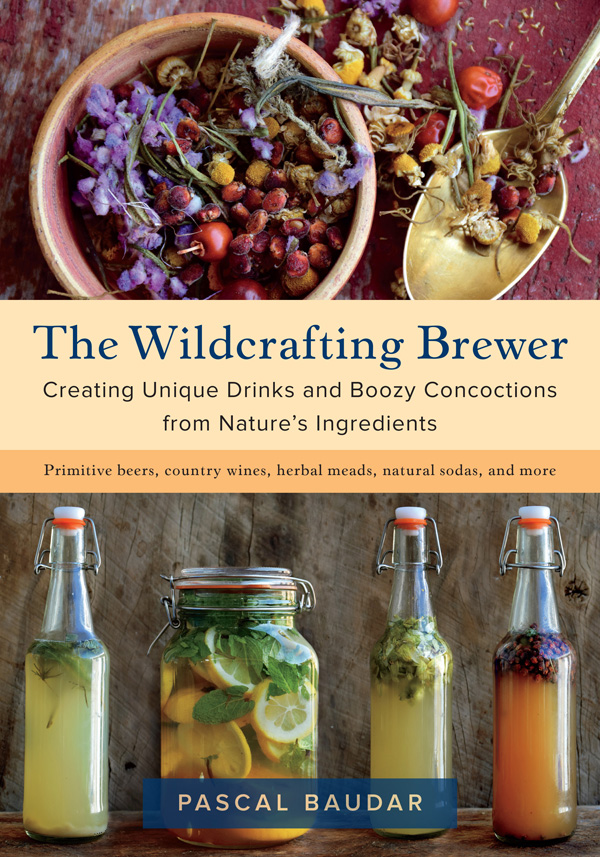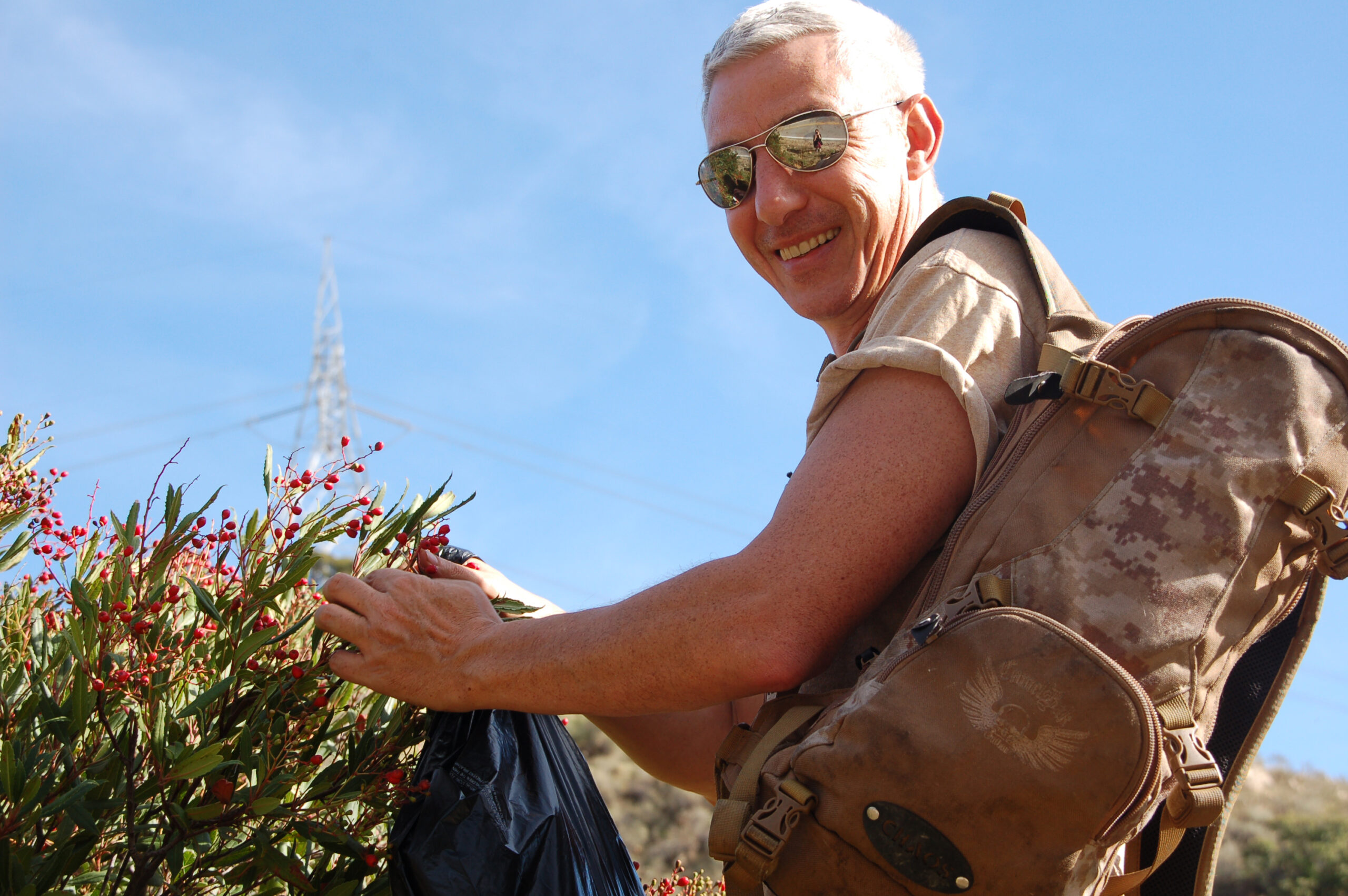This is an old French recipe I discovered. It uses a bit of an unusual method, but it’s also much simpler, and honestly I like the flavor better. The standard winemaking technique involves boiling and simmering juice, which unfortunately also kills the wild yeast; thus winemakers typically add commercial yeast (wine or champagne). This recipe, however, forgoes the yeast.
This wine should end up a tad sweet. Wild yeast from elderberries can be quite interesting and variable. I’ve made batches that had a higher percentage of alcohol and were drier. Just taste the brew when it’s ready and add sugar if necessary.
Because it uses raw juice and wild yeast, this wine is probably more prone to spoiling (it turns to a yummy, useful vinegar) than wines made with the boiling method. But so far at least, this has never happened to me. Just make sure to clean thoroughly all the equipment you use in the process.
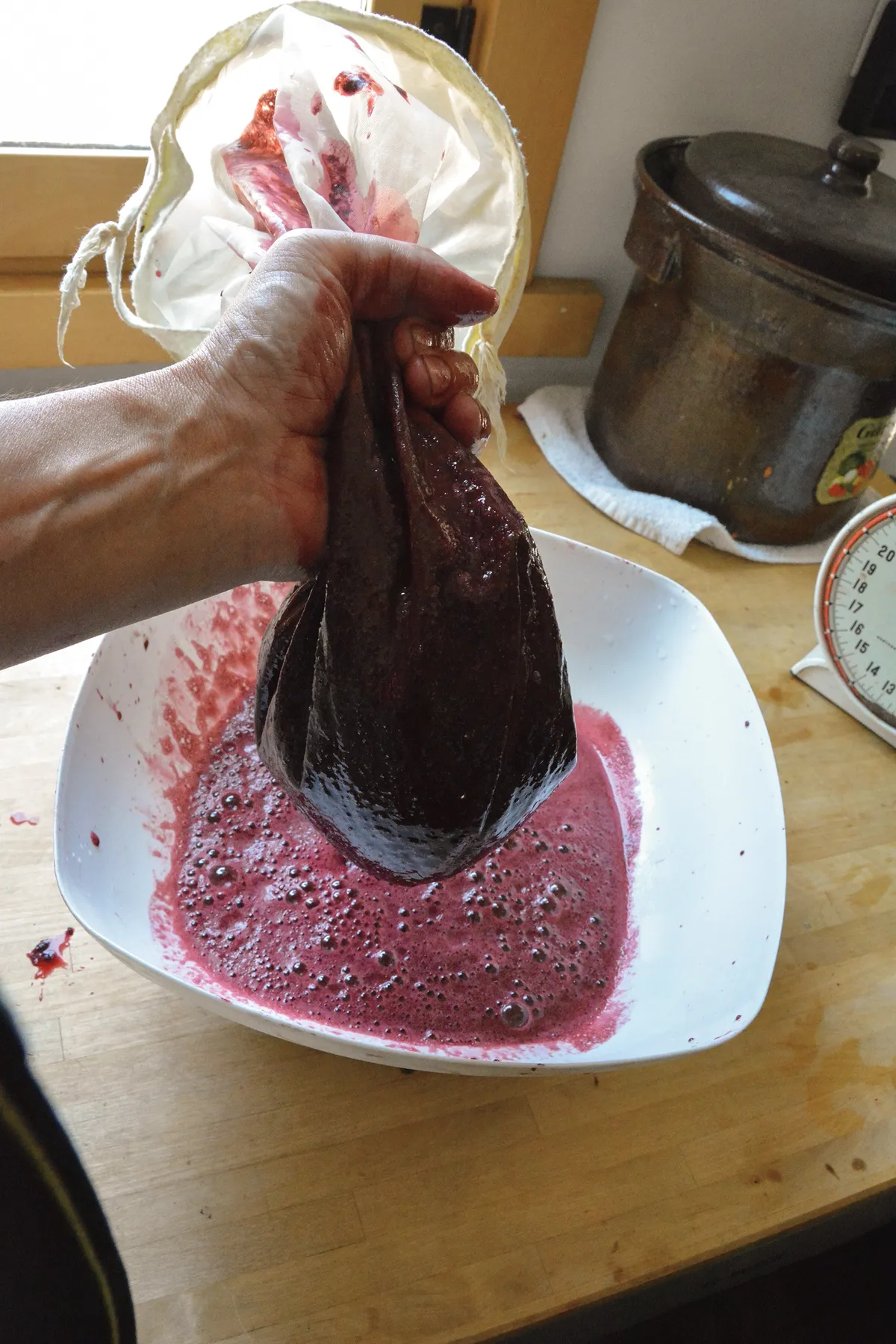
For more advice and inspiration on foraging, head to our foraging hub, where you'll find guides to popular plants to forage such as nettle and bramble, reviews of the best foraging books, and recipe ideas including how to make rosehip syrup and how bramble (blackberry) whisky.
Using elderberries
For this recipe, I've often used the berries from Mexican elder trees (Sambucus mexicana, sometimes considered a subspecies of European elder, S. nigra), which provide either white or black berries (they look similar to white or black grapes in terms of color).
These berries are also more sugary than other elderberries, so if you live in a different state or country and are working with the European elder (S. nigra), you may want to add a bit more sugar than this recipe calls for.
Or you can also just follow the amounts given here, then sample the brew when fermentation is complete and sweeten to match your taste. But note that the recipe may not be appropriate for other types of elder trees and berries.
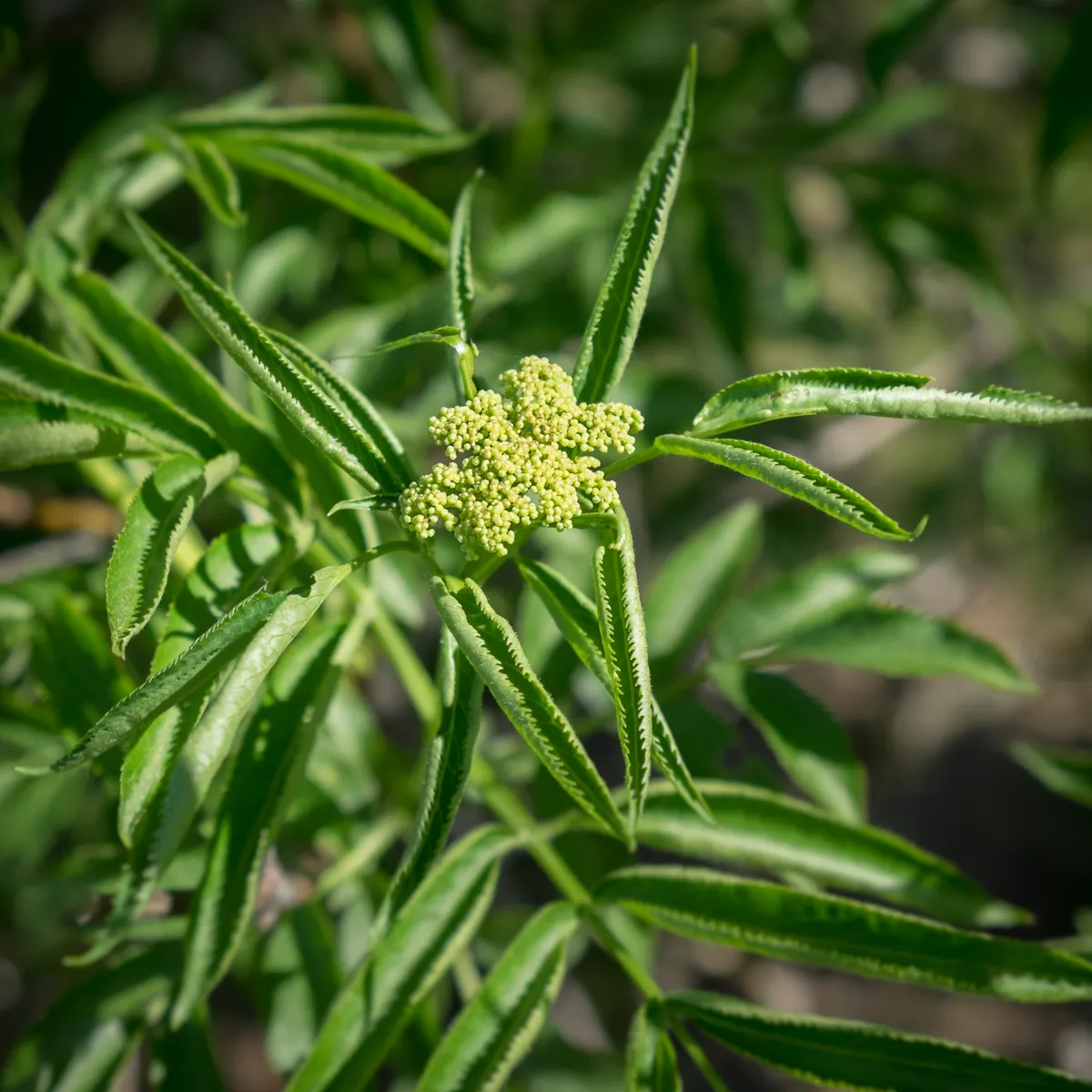
Note that you need to pick the berries when they are fully ripe for this recipe. Unripe berries may contain cyanidin glycoside, which isn’t good for you; drinking raw elderberry juice is also not advised.
Fermentation with raw juice is documented in the books Preserving Food Without Freezing or Canning by the Gardeners and Farmers of Centre Terre Vivante and Wild Fermentation by Sandor Ellix Katz; it’s the only method I’ve used for the last three years. The Nordic Food Lab has also done some interesting work related to the effect of fermentation on cyanogenic glycosides in elderberries.
If you’re unsure about ripeness or other issues (cyanogenic glycosides, types of elderberries, or the like), simply use the same basic recipe but boil the juice and add commercial wine yeast or wild yeast starter once the solution has cooled down.
Crush all the berries and place them into a barrel with the other ingredients. Let everything rest for a month, then strain the wine into bottles.
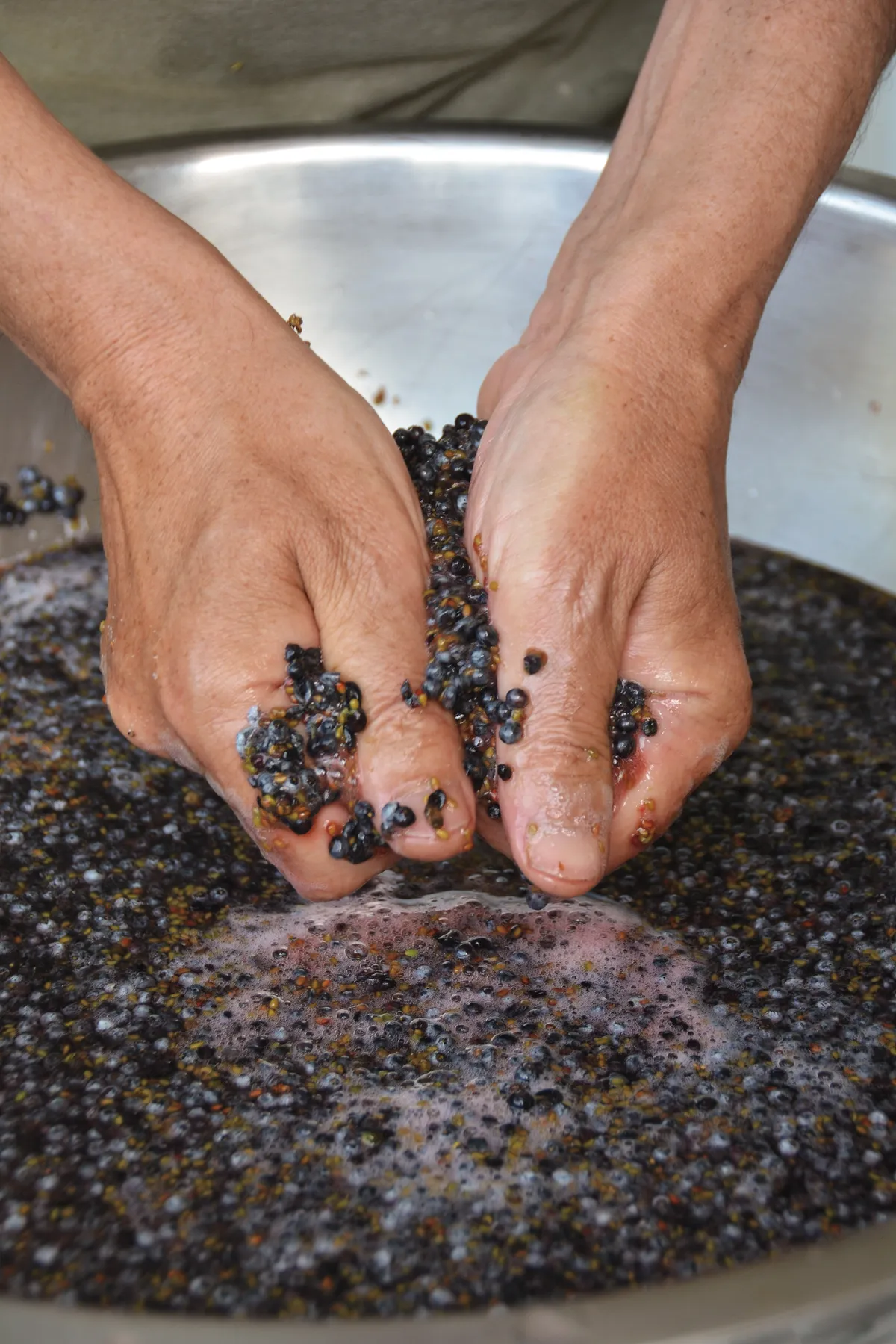
The ingredients listed below are my modern interpretation of the old French recipe ingredients:
- 25kg elderberries
- 2.5kg honey
- 2.5kg white sugar
- 25g salt
How to identify European elder
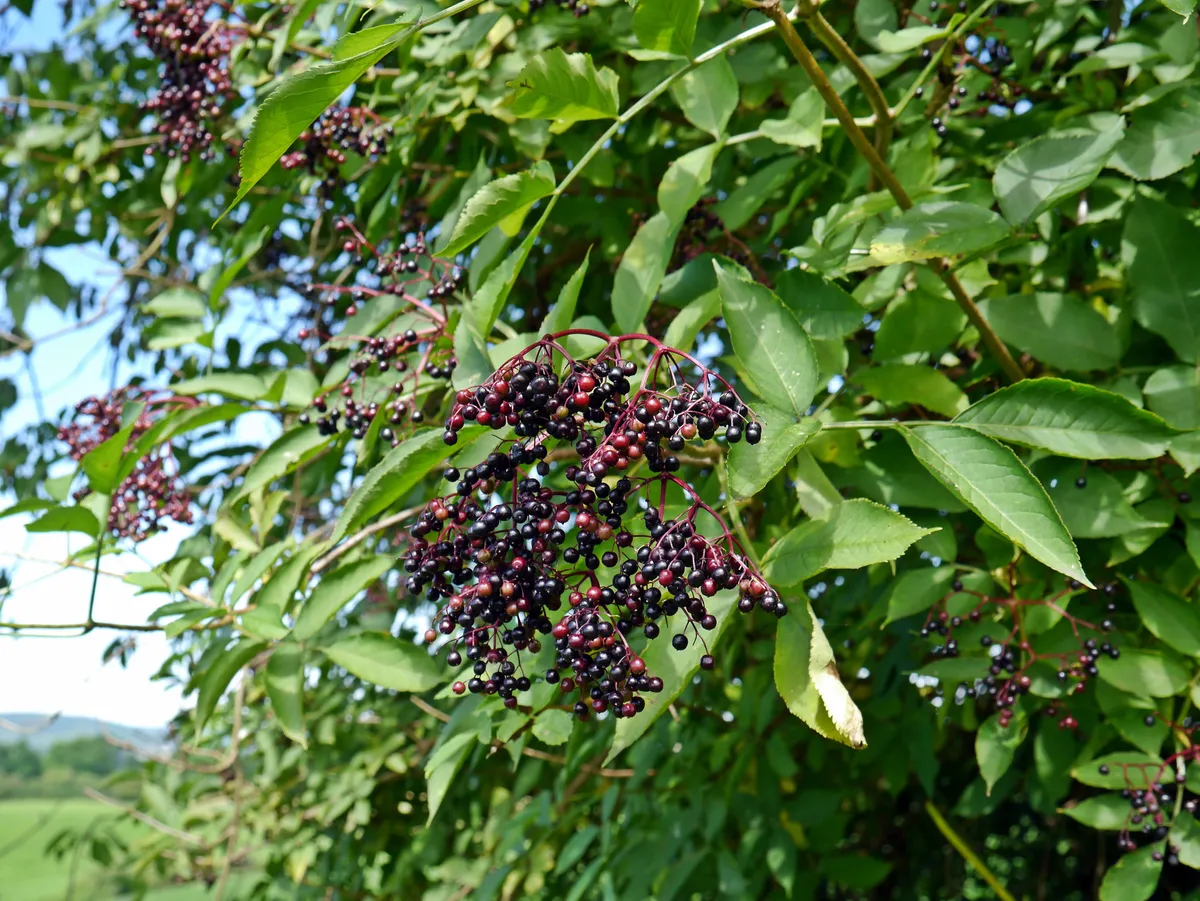
Both elderflowers and elderberries can be used in a variety of recipes, though a little care must be taken with the latter. The Food Standards Agency recommends cooking elderberries to destroy toxins present in the raw berries that may cause you to feel unwell.
The ripe fruits of elder trees are amongst the easiest of wild fruits to identify. Once pollinated, the flowers develop into small green berries. These gradually turn red and then purple-black when ripe.
Like the flower, they are in clusters, and as they ripen, the whole cluster begins to droop as it becomes weighed down by the berries. Depending on your location in the UK, elderberries start to ripen from mid-August.
Elderberries can be used in a variety of recipes, such as spiced liqueur and hedgerow ketchup, and added to jams and crumbles.
